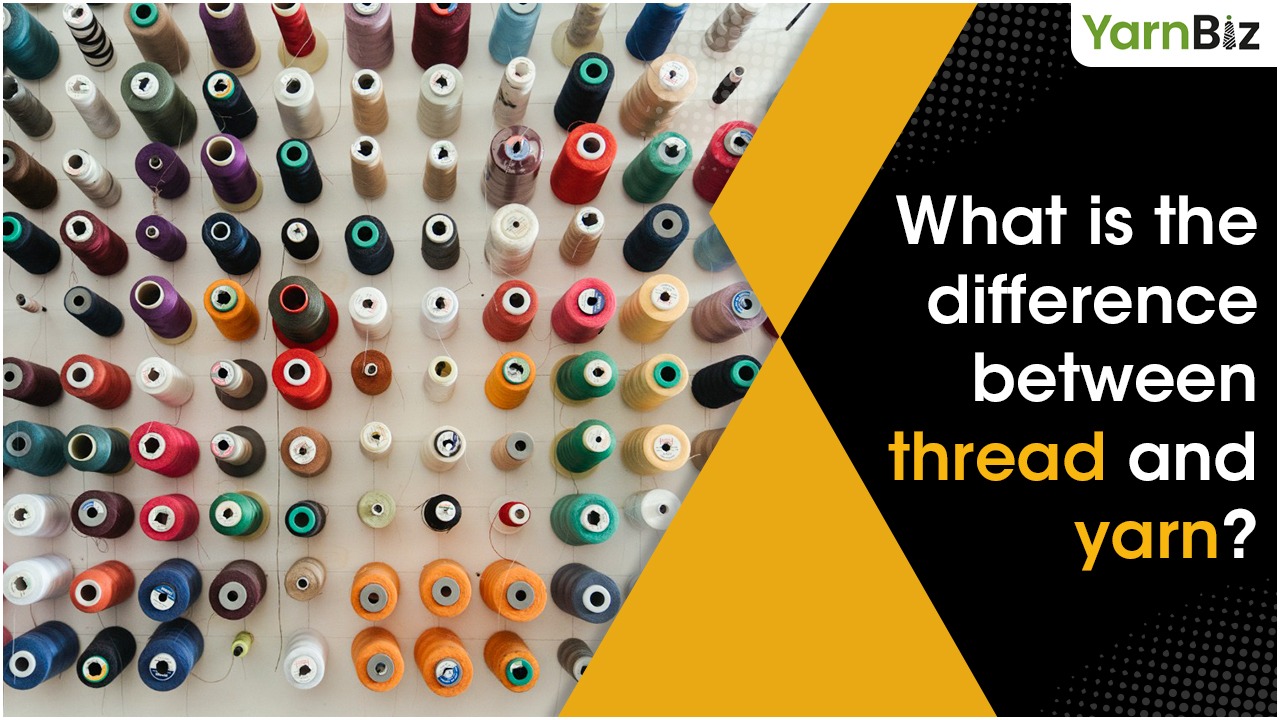
What is the difference between thread and yarn?
Today, we have decided to create, weave and sew together a fascinating tale for you. Threads and yarns are the small, finer elements that make up clothes, just like how atoms and particles make up whole elements. But do you ever think, what is the main differentiation between these two seemingly similar components? There are numerous of them, and we have taken the effort to list the main ones out below for you!
Conceptual Difference
A thread is made from a big length of fibers like cotton, nylon, wool, linen, silk and other natural and synthetic fibers. The main purpose of threads is to sew and stitch garments together or do patch work aka darning to repair damages like cloth ripping or holes in fabrics. A yarn on the other hand is a strand of continuous fiber, be it natural or synthetic. It is basically used to knit and weave fabrics to make clothes. The main difference between the two elements is that a thread is a subtype of yarn.
Strength and Weight
A thread is usually much thinner than a yarn. A thread thus weighs lighter than a yarn. Despite this, a thread is usually much stronger than the average yarn.
Difference in Types
There is a significant difference between the subtypes of yarn and thread. The different types of threads are sewing threads, used for sewing buttons and cloth damages, embroidery threads, used to perform delicate embroidery on clothes and crochet threads, usually used to make textiles and household items like tablecloths. On the other hand, wool, cotton and acrylic are the main types of yarns which are often sold in balls, hanks and skeins.
Uses
A yarn is usually used to make fabric sheets and threads, which are then woven and knitted together. A thread, as previously mentioned, is used to sew separate fabrics together, and repair any damage on clothes, or embroider stylish designs on them.
Thread Vs Yarn Count
Thread and yarn count are used to describe how thin or thick the material is. There are 2 separate types of yarn count, subject to its subtype. They are called direct and indirect counts. Indirect count measures the amount of length units in one unit of weight and is usually used for linen and cotton. Direct count measures the opposite- the number of weight units in one length of unit. It is usually used for silk and synthetic fibers. Thread count, also called the tex count system, is the direct count of threads and functions in the same manner as the direct count of yarns. The second type of thread count system measures how many threads a square inch of fabric contains. In this system, the more the thread count, the better the thread quality.
These are thus some of the main significant differences between thread and yarn. We hope the concept is now crystal clear in your heads. To procure and sell yarn of the highest quality, do connect with us at YarnBiz, we are here to serve you!





